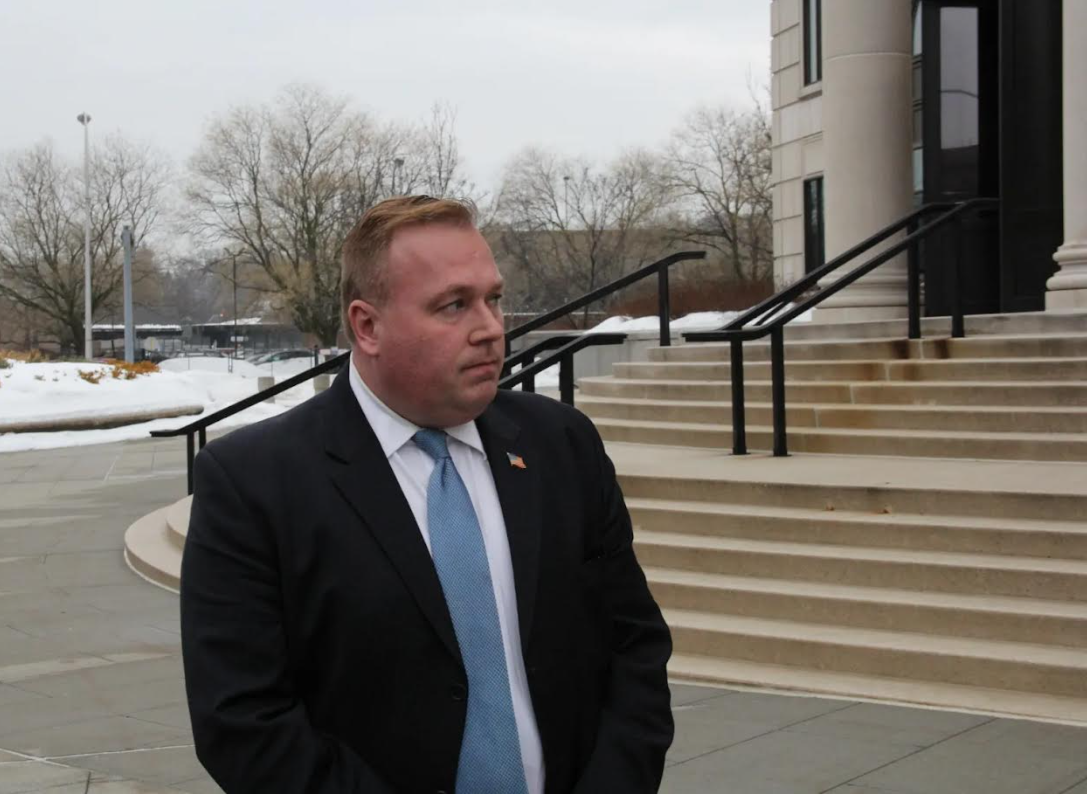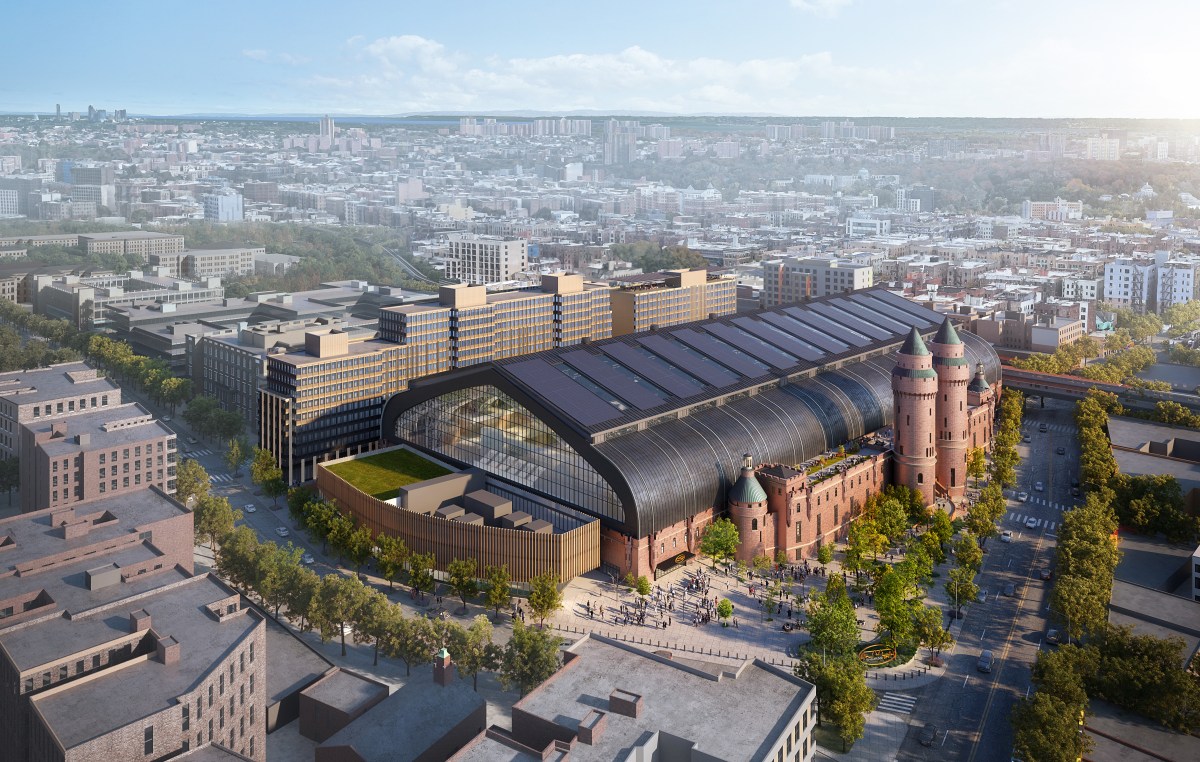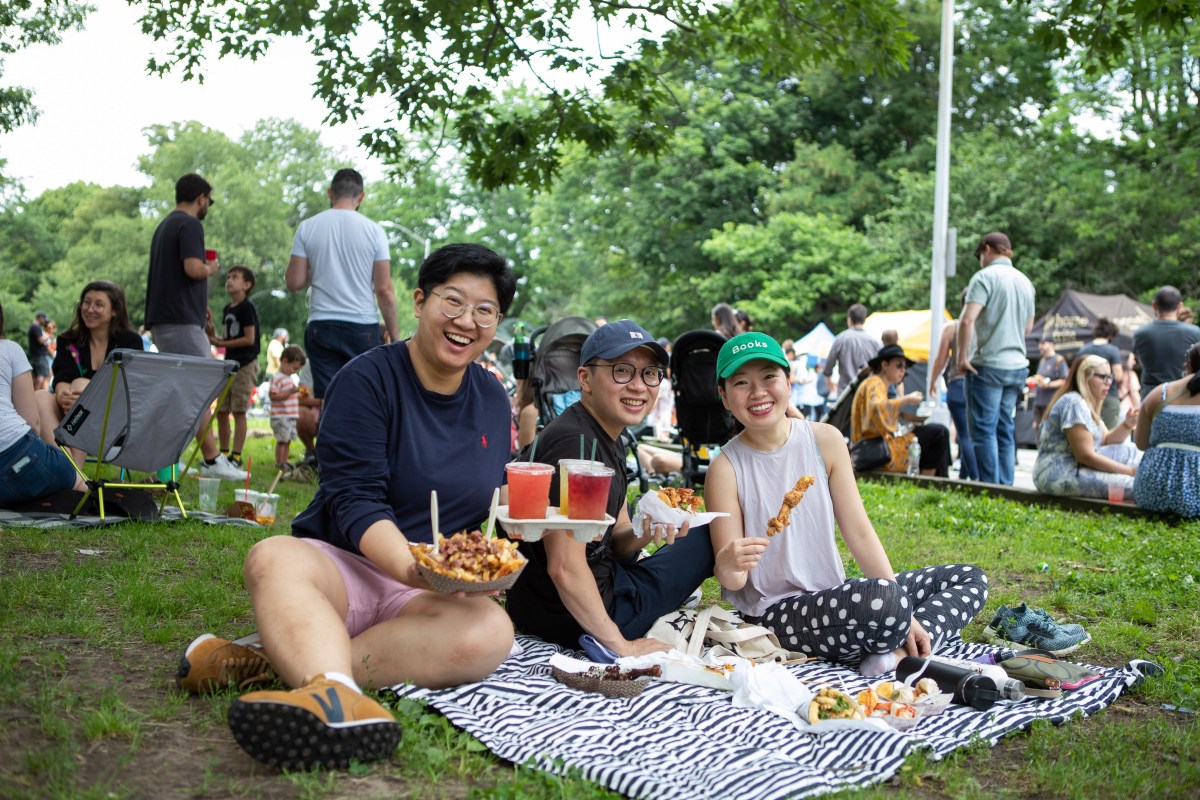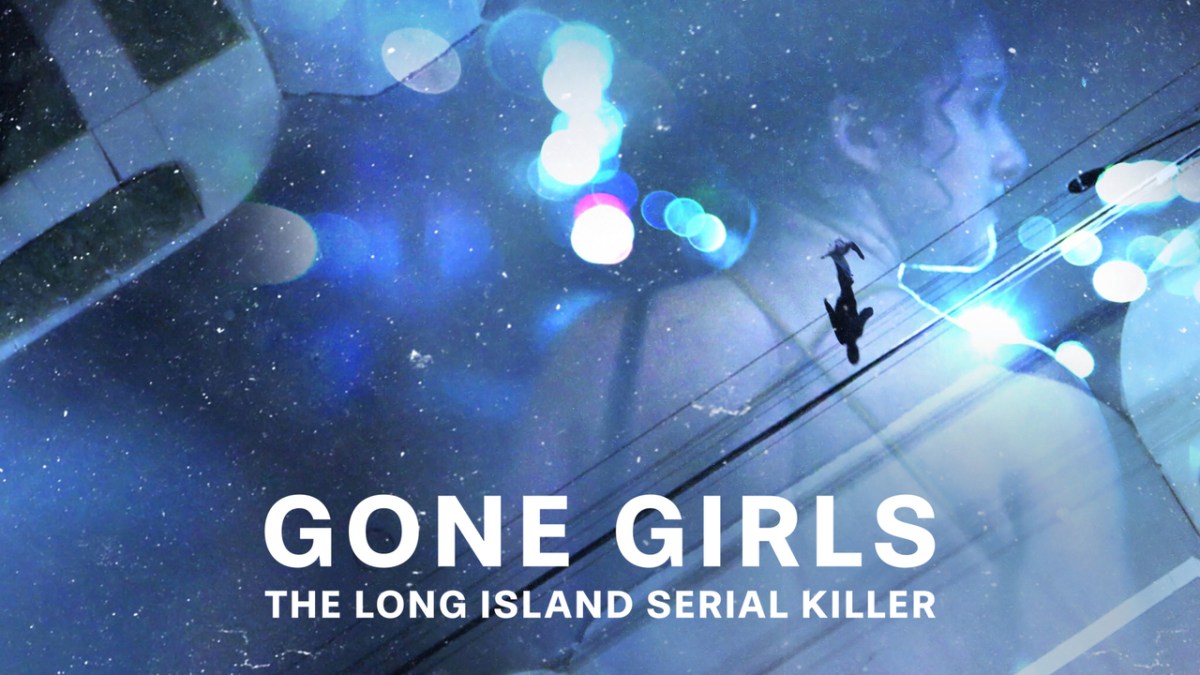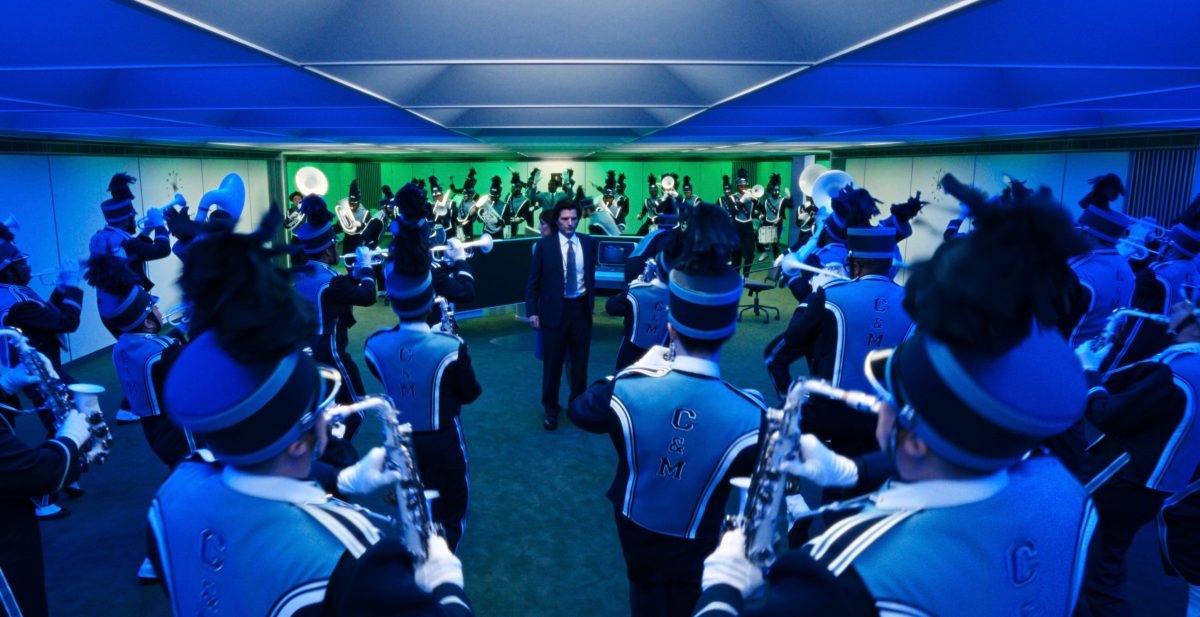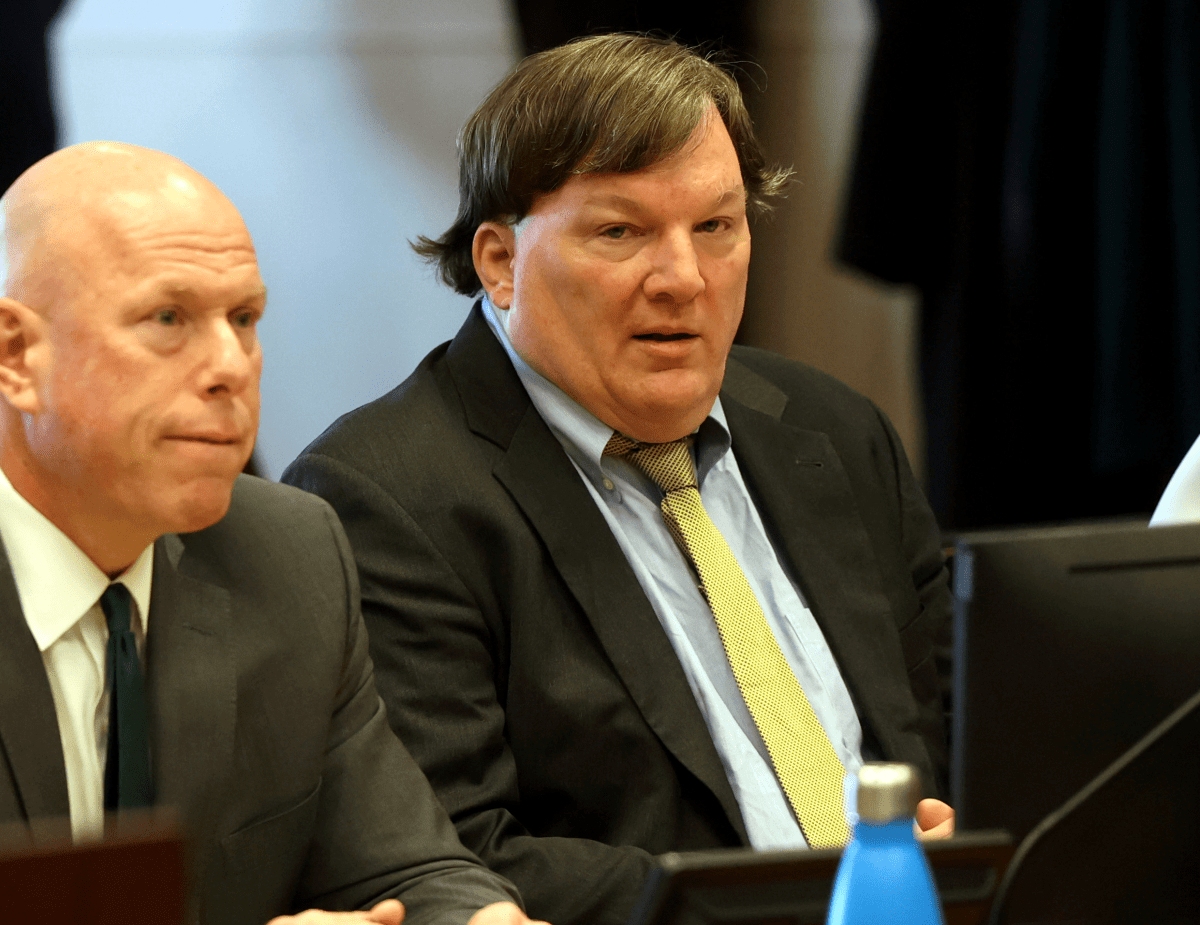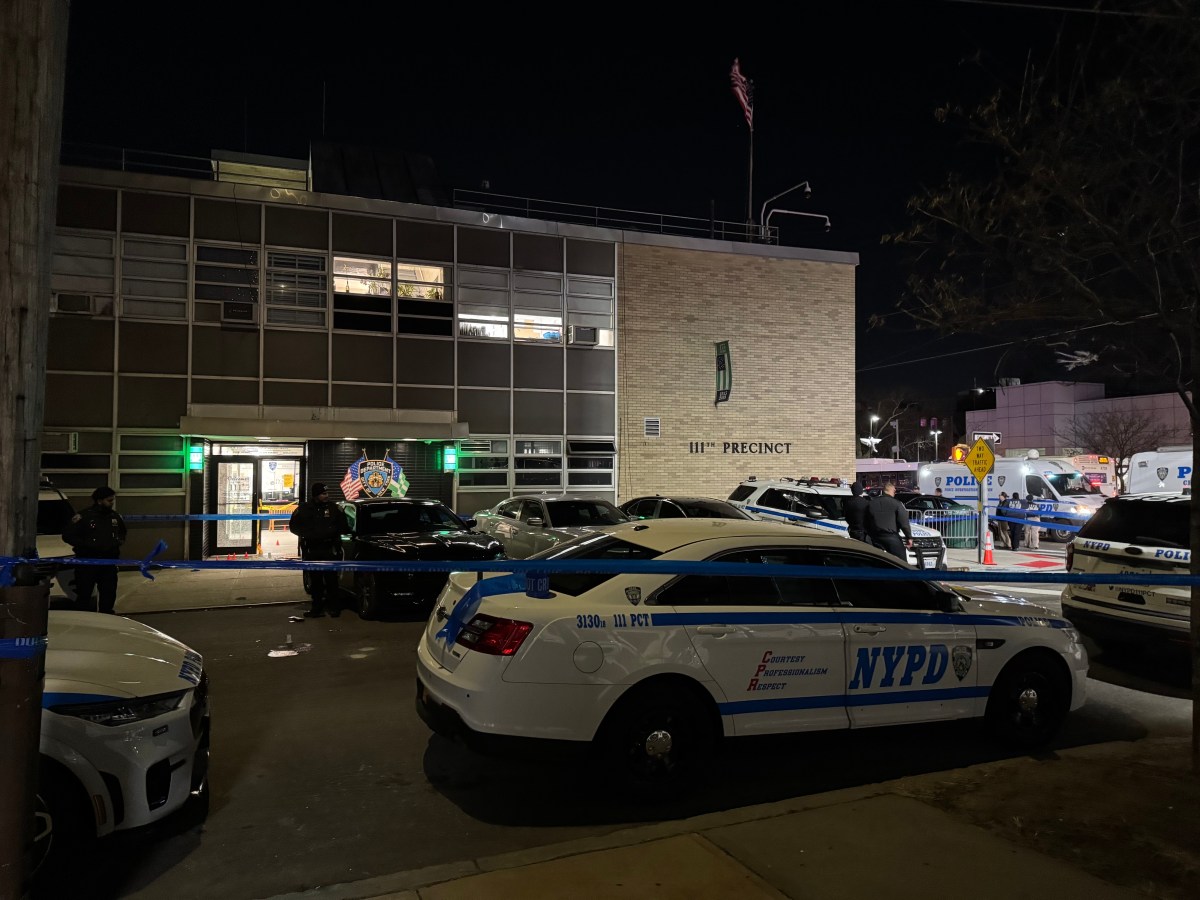By Janel Bladow
There’s a Seven-Legged Beast loose in City Hall Park. That’s not all, nearby stands a Three-Colored Dog.
Those are just two of the five massive metal Alexander Calder sculptures gracing the grounds around City Hall. A sixth metal mobile, “Untitled,” hangs in the building’s ornate rotunda and requires a reservation to view.
The sculptures by the late American artist were installed in the park over the weekend and are the latest public art collaboration by the Public Art Fund and Mayor Michael Bloomberg.
“We are honored to host this exhibition of modern master Alexander Calder’s sculptures and welcome the Public Art Fund’s fourth show to City Hall Park,” Bloomberg said in a prepared statement. “We have had a tremendous response to the first three shows and expect that our latest collaboration will complement our city’s thriving public art program, which exists throughout the city. Whether you are looking at Calder’s ‘Untitled’ in the historic rotunda of City Hall or ‘Jerusalem Stabile’ set against the majestic backdrop of the Brooklyn Bridge, it is our hope that this exhibition will inspire New Yorkers and visitors alike.”
One Manhattan resident, Dean Rainey, who works for the city in the Municipal Building nearby, enjoyed the exhibit last Tuesday as the sun peeked through the clouds.
“New Yorkers like having art in public spaces,” he said as he sized up the vibrant red “Jerusalem Stabile,” a one-third scale version of one of Calder’s last commissions, which is on permanent display in Jerusalem, Israel. The piece spans 24 feet and is located on the sidewalk east of City Hall at the mouth of the Brooklyn Bridge. “Tourists will definitely like it. It is a really spectacular piece.”
Agnese Bailo, a tourist from Florence, Italy, sat on a park bench in front of City Hall, learning how to use her new digital camera. She wanted to photograph the all-black Calder behind her, one of the artist’s earlier pieces, “Seven-Legged Beast” from 1957.
“It looks like a building, a skyscraper or an animal, a dolphin,” she said. “I like art in parks. We have a lot at home.”
“Alexander Calder in New York,” is the fourth exhibition in City Hall Park since 2003 and is sponsored by Forest City Ratner Companies and organized by the Public Art Fund. All the sculptures are on loan and must be returned to their owners. The exhibit runs for a year, through April 2007.
“A Calder exhibit in New York City is long overdue,” Rochelle Steiner, director of the Public Arts Fund, told Downtown Express. “And it’s the first time his works are presented to the public in one group. We’re thrilled to have the opportunity to show this modern master’s works which are so well scaled to City Hall Park.”
Calder, born in 1898, came from a family of artists, but didn’t set out to become one himself. He received a degree in engineering, working with automobiles and hydraulics and even was a fireman in a ship’s boiler room.
But a move to New York City in 1923 led him to enroll in the Art Students’ League. And a job illustrating for the National Police Gazette sent him to sketch circus scenes. He would eventually create Cirque Calder, miniature artworks of animals, performers and props he made from wire, leather and other found materials.
In the 1930s he began shaping wire into mobiles, pieces that hang and move, and designing large, outdoor, nonmoving sculptures, which he called “stabiles.” Most of his major monumental pieces were made between 1957 and his death in 1976.
“La Chien en Trois Couleurs” (Three-Colored Dog, 1973) sits prominently on the west side of City Hall Park near Broadway.
Ann Warnitsky of Brooklyn carefully studied the piece but thought it looked more like a “strong bird in flight,” adding she enjoys seeing artworks outdoors.
“This is a good idea, a pleasant surprise,” she said. “You stop, look at the trees, the birds, flowers and the art. You slow down a little.”
Two more large-scale sculptures in the park – “The Arches” (1959) and “The Cock’s Comb” (1960), black sheet metal constructions – epitomize his explorations of abstract forms in space.
Checking them out with a friend from Chicago was Skip Blumberg, president of Friends of City Hall Park. “Art in public spaces is popular and that’s good,” he said. But he adds a caveat, “the big problem is that since 9/11 the gates to City Hall are closed. Thousands of people once walked from the subway through the park every day.”
New Yorkers and tourists alike have grown attached to artworks in the earlier three exhibits such as an oversized picnic table and the digital walkers climbing the Tweed Courthouse steps.
“Sorry to disappoint everyone,” said Art Fund director Steiner. “But every one of our exhibits are temporary, all the art is on loan from their owners. It’s so interesting that people grow attached to pieces, passing by them day after day. But it was never meant to be permanent. In time, they’ll grow attached to the Calders, I’m sure.
Besides this temporary exhibit, Calder mobiles and stabiles can be found in several other spots around the city, one just blocks away from City Hall. “Object in Five Planes” (1965) is at 26 Federal Plaza near Worth and Lafayette Sts.
“Alexander Calder in New York” is free and open to the public. Reservations are required for City Hall tours to see the “Untitled” mobile in the rotunda. Call 311 or log onto www.nyc.gov for more information. City Hall Park is bordered by Broadway, Chambers St., Centre St. and Park Row.
WWW Downtown Express












